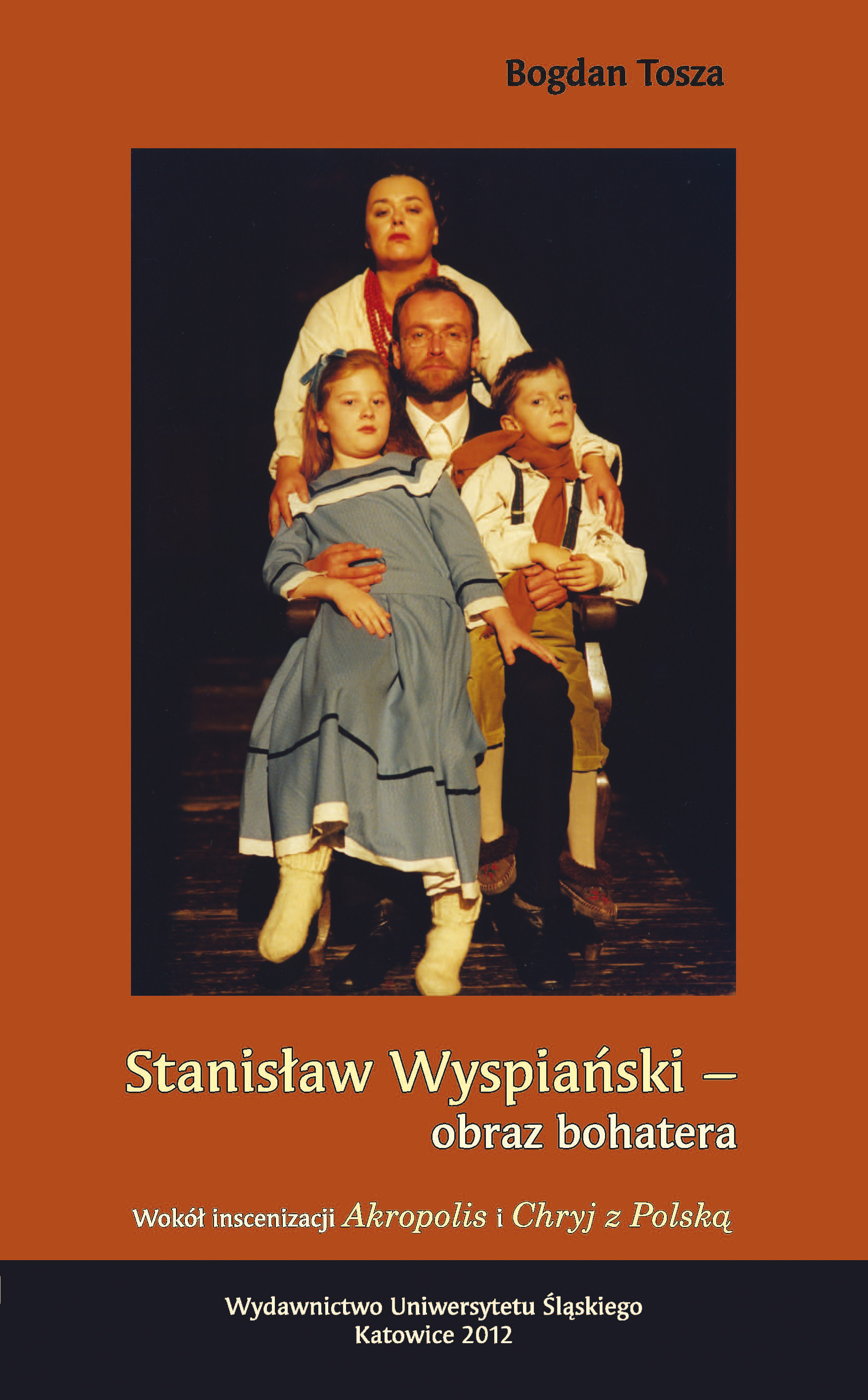Stanisław Wyspiański – obraz bohatera. Wokół inscenizacji „Akropolis” i „Chryj z Polską”
Stanisław Wyspiański — a picture of the hero. On inscenization of Akropolis and Chryje z Polską
Author(s): Bogdan Tosza
Subject(s): Theatre, Dance, Performing Arts, Fine Arts / Performing Arts, Visual Arts, Film / Cinema / Cinematography
Published by: Wydawnictwo Uniwersytetu Śląskiego
Summary/Abstract: Taking the position of the manager of Teatr Śląski in Katowice in 1992I was aware of the fact that it was the only theatre in Poland named after StanisławWyspiański. The patron himself and his thinking about art, especiallyan interdisciplinary nature characterizing him, imposed the project of an artisticprogramme on this stage for 11 years. Wyspiański’s connections with Silesiacover both an artist’s interest in an Old‑Piastdistrict, including fascination withHenryk Pobożny, and his contribution to the shape of the intellectual formationof Poles who, after 1918 dictated a socio‑politicalnature to Katowice. MichałGrażyński, a voivodship and Marian Sobański, a long‑standingmanager, sawStanisław Wyspiański as both the theatre patron, and a starting point for anartistic level they dictated to the very institution. Giving the name to the theatrein 1936 was connected with Józef Piłsudski’s death. For many Poles the marshalwas the embodiment of Konrad from Wyzwolenie, and his death determinedmany spectacular events.The theatre in Katowice offered Stanisław Wyspiański’s biggest masterpiecesin the 1930s. They only lacked Akropolis. The adaptation of this play, consideredby many the most difficult one written by an author of Wesele became a greatchallenge for the Silesian stage at the end of the first century of its existence. Thedecision was reinforced by the fact of Poland’s entry to the European Union andintensification of talks on civilization roots of our country. A biblical area andthe world of Greek and Roman mythology, very much present as the two mainconstituents of Akropolis, allowed the theatre to enter into an important socialdialogue. The task to by performed by producers and, mainly a director, washow to stage the play. The basic conception was solved by means of buildingthe person of the Poet, mainly from the stage directions inspired by the authorhimself when writing Akropolis, his struggles with disease and fascination withPolishness. Next, the person of the Poet became the source of inspiration forWhiting a play on Wyspiański. Chryje z Polską by Maciej Wojtyszko was basedon a little known fact from our history, namely one meeting between Wyspiańskiand Piłsudski on 1 March 1905. Its leading theme was support for an ideaof treasure in favour of the Polish army to be. Stefan Żeromski was engaged ingetting into touch. Wyspiański considered the possibility of taking the positionof the manager in Teatr Miejski. Piłsudski wanted to use a February resolution inRussia to start yet another uprising in Poland. The work by Maciej Wojtyszko,presenting a confrontation of both characters, shows possibilities of a dialogueof art and politics, reveals painful wounds in the history of mentality of Poles.The image of a character Stanisław Wyspiański becomes in both positions isa food for thought.
- E-ISBN-13: 978-83-8012-543-8
- Print-ISBN-13: 978-83-226-2099-1
- Page Count: 168
- Publication Year: 2012
- Language: Polish
- eBook-PDF
- Table of Content
- Introduction

